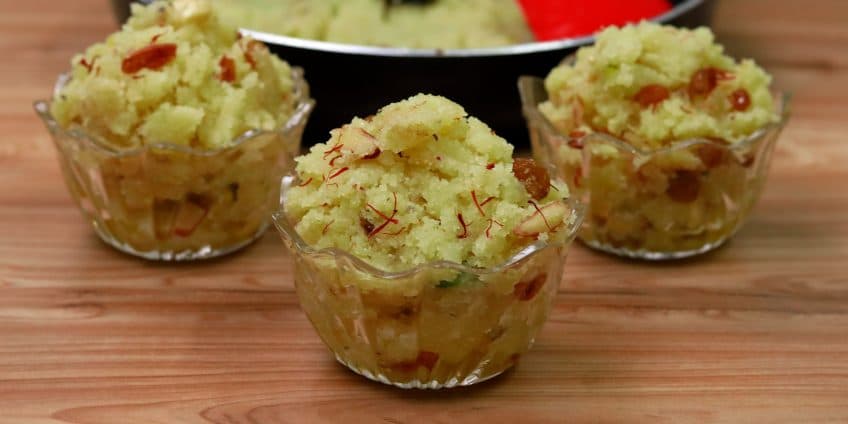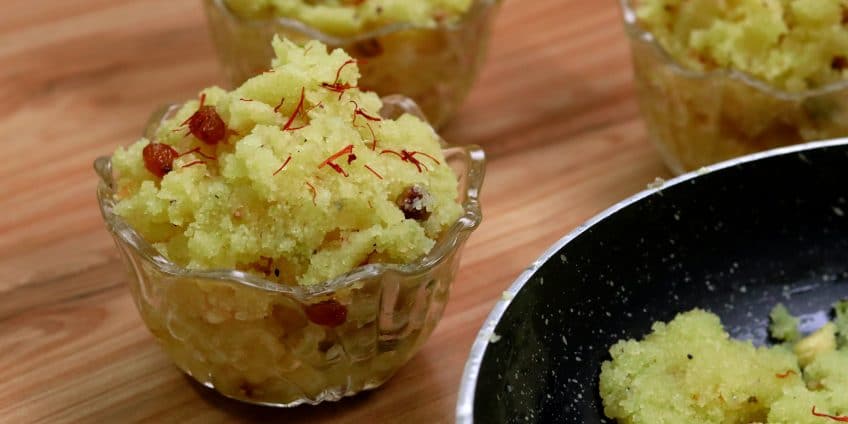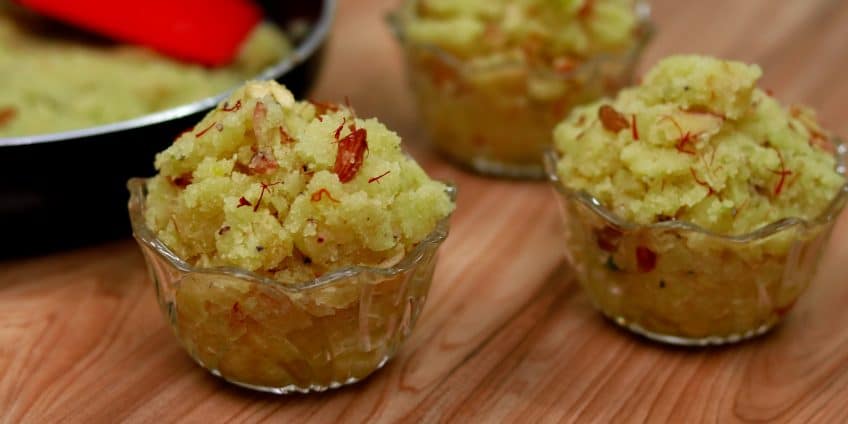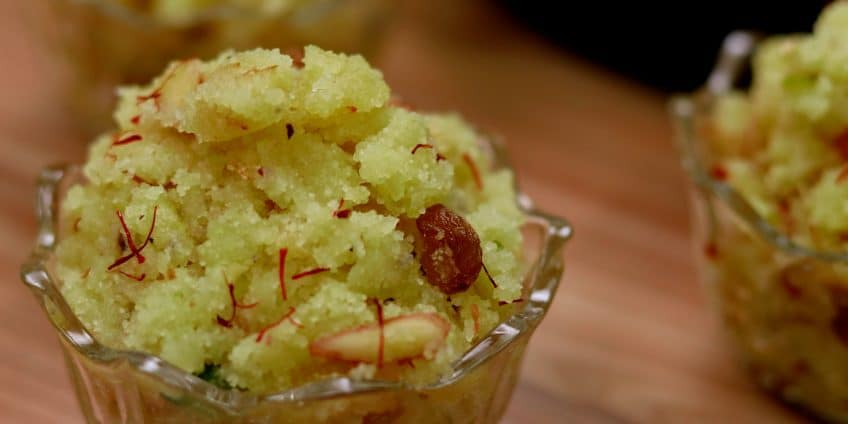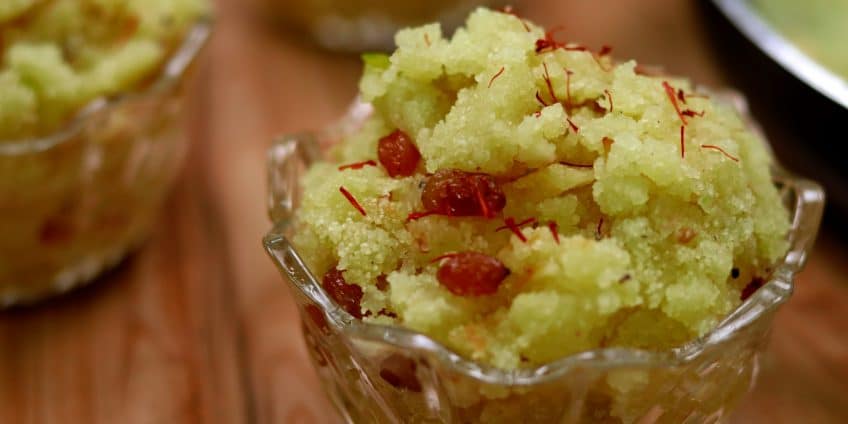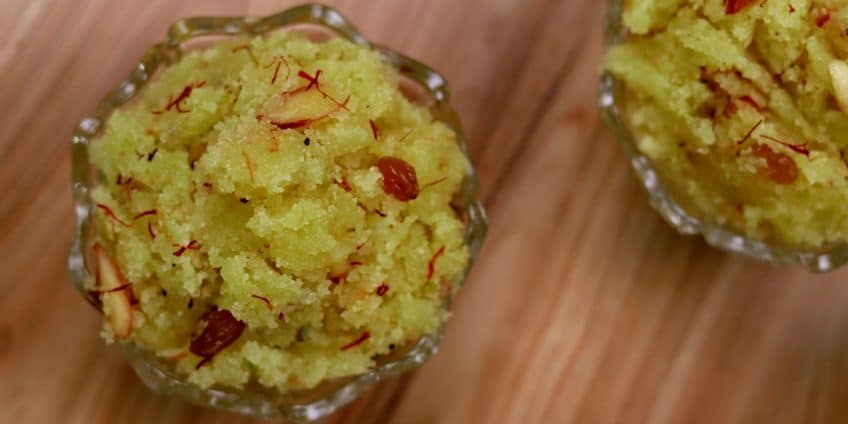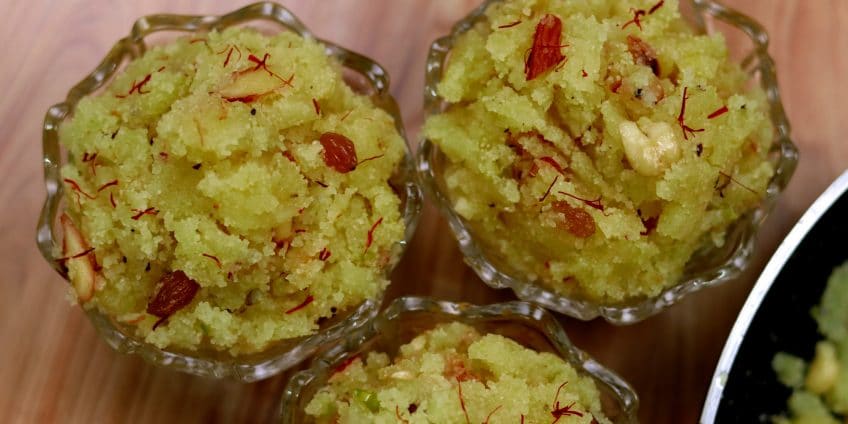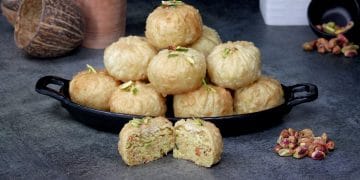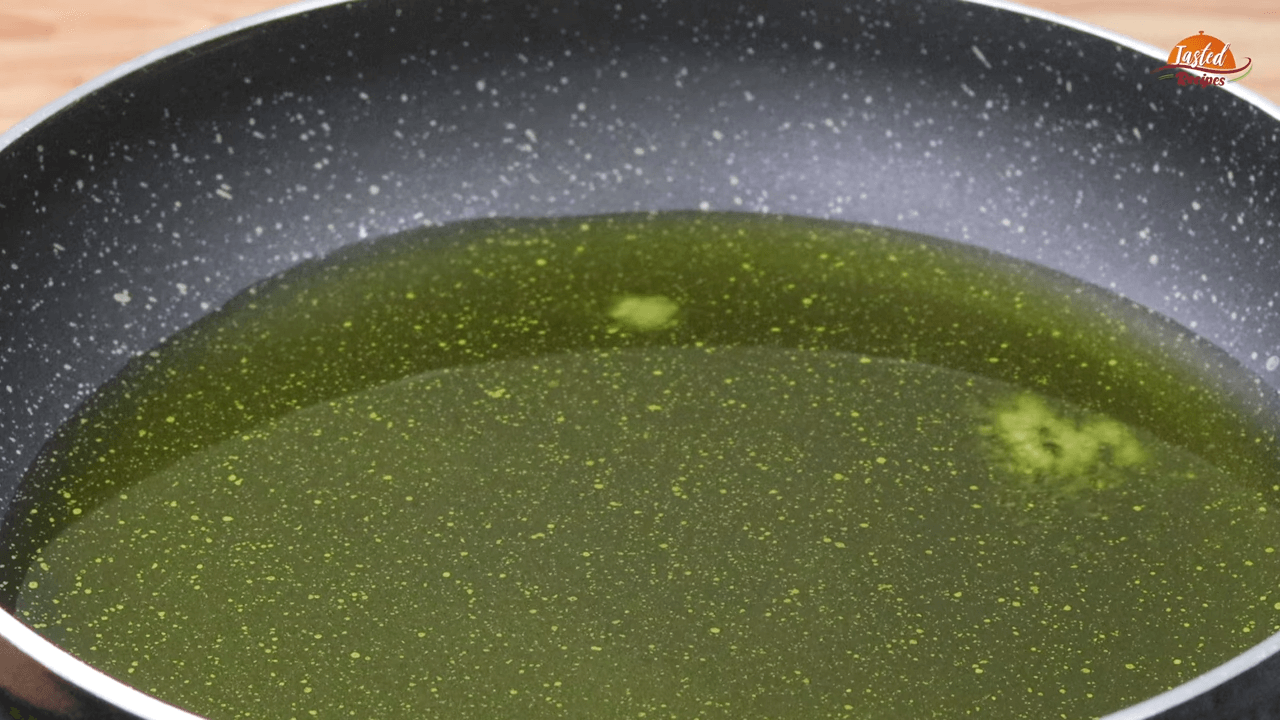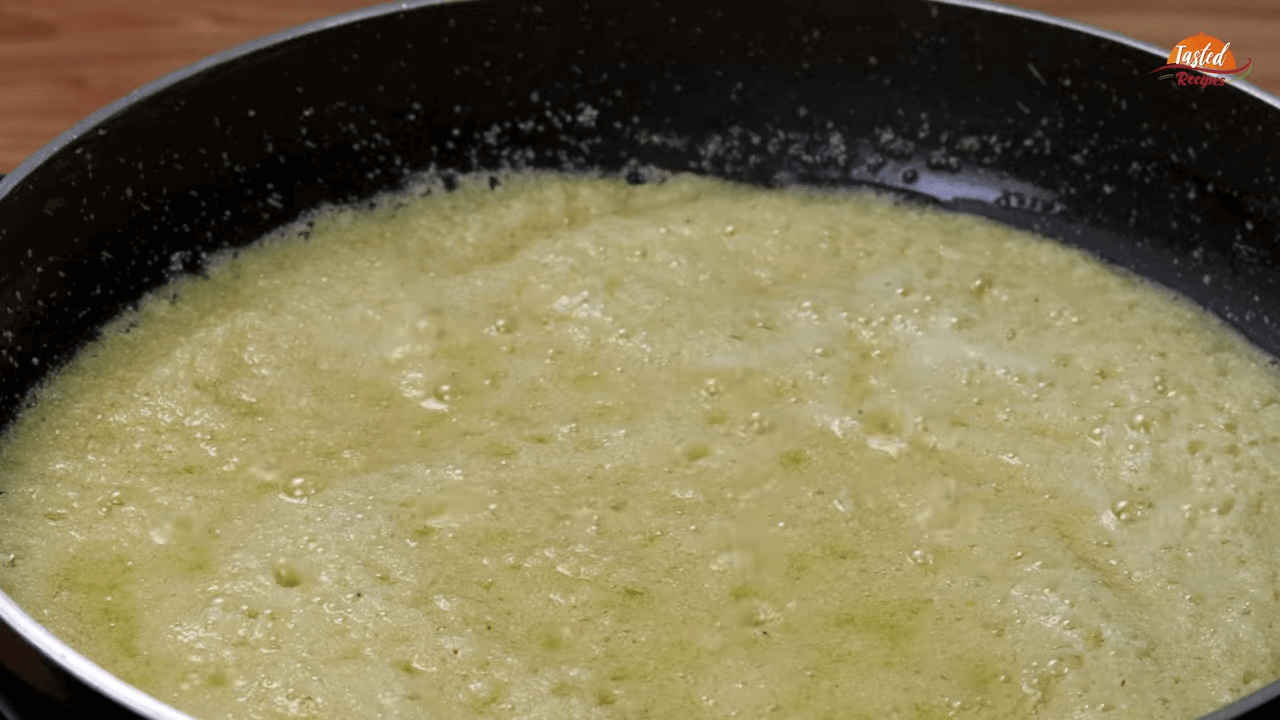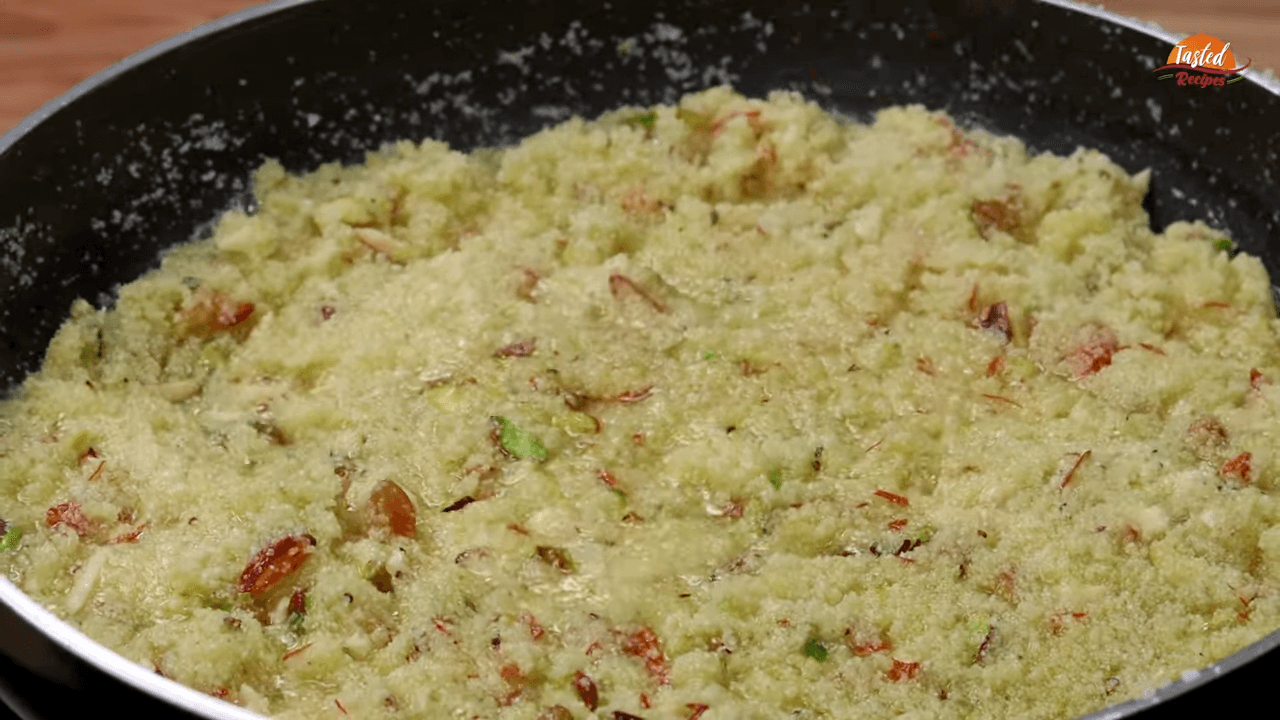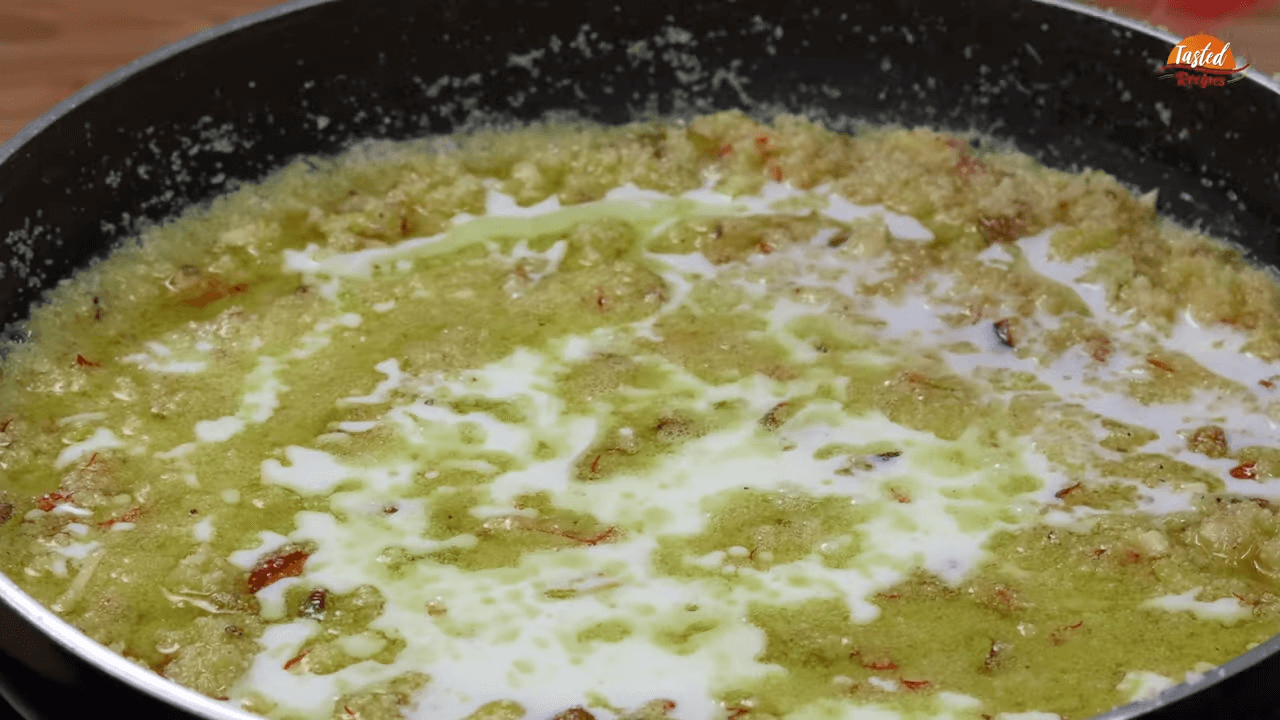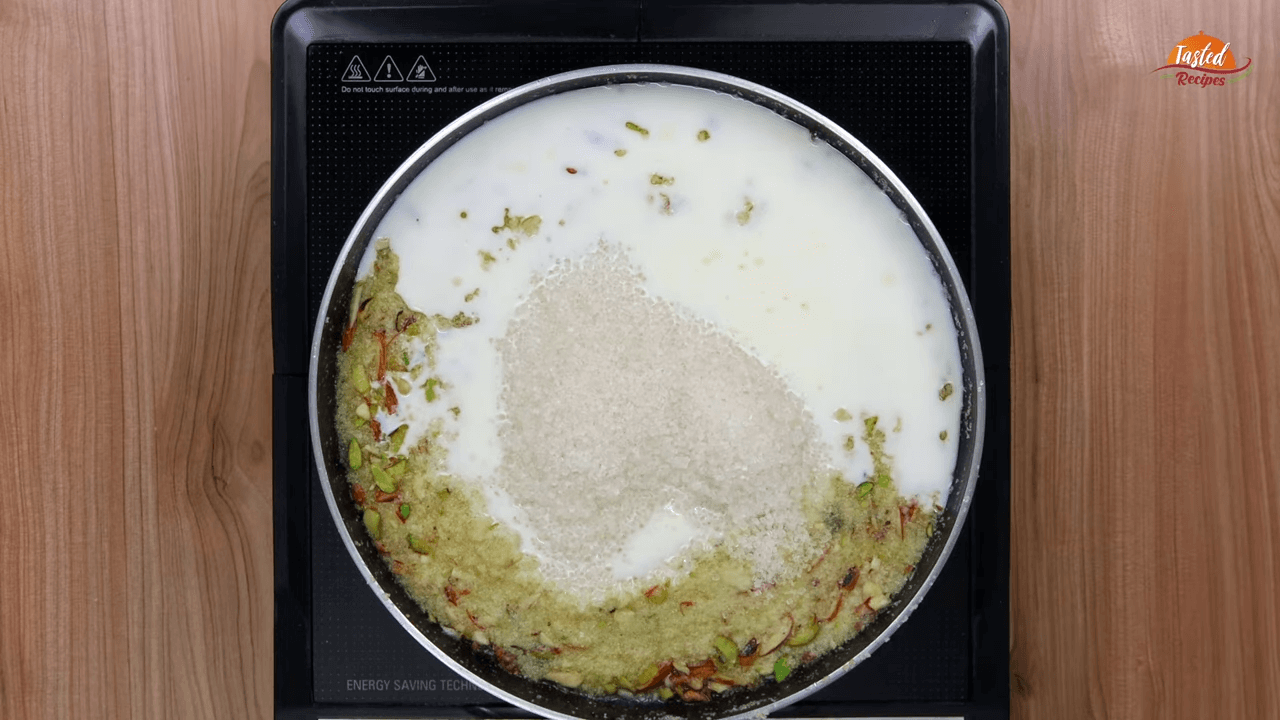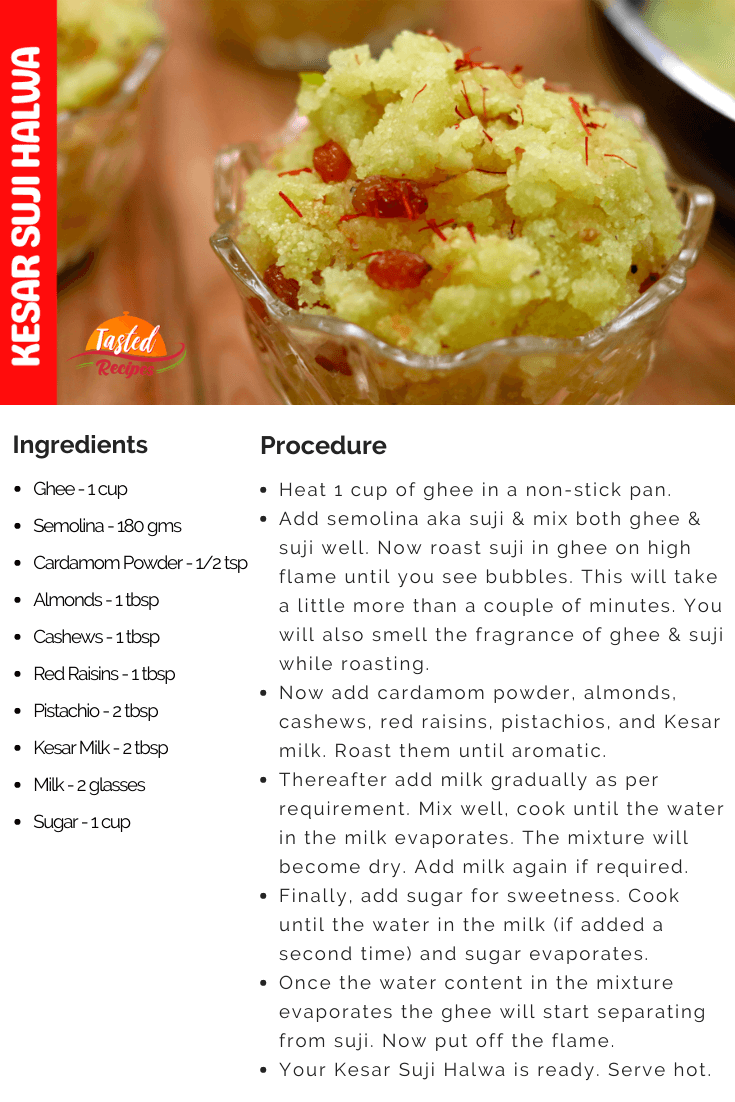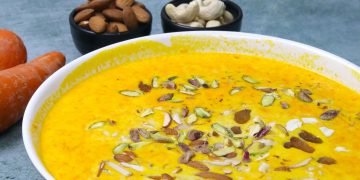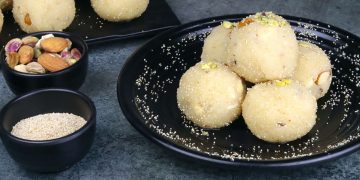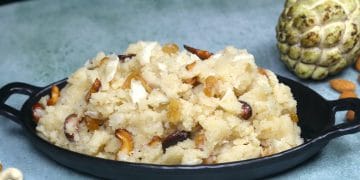Kesar Suji Halwa (केसर सूजी हलवा) is a traditional Indian dessert. Apart from being a dessert item, this halwa is a popular choice of Indian housewives when it comes to कैडबरी के इलावा कुछ मीठा हो जाएं.😋 😋 😋
Okay, let me tell you this. The suji halwa is beyond and above many things here in India. In other words, it has no time constraints. I mean you can cook for lunch or dinner.
Secondly, there’s no specific day to eat suji ka halwa. My point is it is not limited to festivals or special occasions. Any day of the weak is OK to eat this dessert.
Surprisingly, the kesar suji halwa has a special place on the home menus during festivals or celebrations. With this in mind, I have listed some interesting facts about this halwa. Take a look.
Kesar Suji Halwa Facts
There are many legends, facts and stories about suji halwa. I hope you will love reading them. Read below.
What’s in the Name?
The kesar suji halwa has a variety of names. It is referred to as Suji Halwa (सूजी हलवा) or Suji ka Sheera (सूजी का शीरा) in the Hindi language. On the other hand, it is also known as Rava Sheera(रवाशीरा).
In the south of India, it is famous as Rava Kesari (रवा केसरी) or simply Kesari (केसरी). The word Kesari refers to the Orange colour. The Guajaratis call it as Rava no Sheero (રવા નો શિરો) or just Sheero (શિરો).
Religious Offering
The suji halwa holds an important place in the Hindu religion. It is considered a sacred offering to the Hindu deities.
Additionally, Hindus believe the suji halwa to be a crucial food offered as prasadam during the Satyanarayan Katha. So especially when they purchase a new house, there’s this Katha and the Suji Prasadam.
Even the nine days of Navratri and ten days of the Ganpati festival are incomplete without offering the rava sheera.
Variations
One can make suji halwa or sheera with four essential ingredients. They are ghee, rava, elaichi and sugar. If that’s the case, what is the kesar suji halwa that we are making today? It’s a variation.
Anything you add beyond the four essential ingredients is a variation of the core recipe. For instance, if you add kesar aka saffron, it becomes kesar suji halwa. Saffron is for flavour & colour.
At the same time, if you add dry fruits, it becomes dry fruit suji halwa. Then again, if there’s milk in it, it will become milk suji halwa. So overall, the basic halwa can easily be adapted in multiple variations depending on what you further add.
Colourful Aspect of the Rava Halwa
Similar to the ingredients, the texture of this halwa speaks a lot about it. For example, adding kesar will give you a saffron colour halwa. Another critical point about saffron is it is a natural colouring & flavouring agent, just like Turmeric. On the contrary, artificial food colours make your halwa colourful. For instance, if you mix lemon, yellow, orange and red food colours in the required proportions, you will get saffron.
Apart from all this, the basic suji ka halwa is colourless. Therefore, it depends on how you like your halwa – plain or colouring.
Share it with others if you like what you read about suji halwa. Also, let me know if you have equally fantastic stuff in the comment section. Okay, now back to the recipe. Let’s begin making it in the first place. Here you go.
Roasting Semolina (Suji/Rava) in Ghee
The suji ka halwa is an age-old dessert recipe made using ghee. In short, there’s no room for cooking oil here. There will be a lot of ghee, and there’s no turning back on it. Folks with diet regimes and those counting calories must eat on cheat days.
Let me tell you that ghee is unskippable. We need it to roast semolina. When your rava is roasted correctly, you will see bubbles. Proceed with the next step. Now let’s talk about what type of ghee you can use. Either use packaged dairy ghee or homemade ghee. Both work well.
You can even opt for cow ghee. However, the best choice is the kanidar jamkhambhaliya ghee, which has a pleasing aroma and superior quality.
Cooking Semolina (Suji/Rava) in Milk
It may sound as not very clear, but it is not. First, we will roast suji in ghee and then make it soft and flavourful using milk. Any milk will do, provided it is full fat.
Adding milk will make the halwa look and taste smooth plus creamy. I suggest you not skip milk unless there are specific health reasons. You will love your milkwala suji halwa.
Whole Sugar, Powdered Sugar or Sugar Syrup?
There are three ways you can add sugar for sweetness. Whole sugar granules, sugar powder (I like this one) and sugar syrup will work fine.
If the sugar granules are large, they will take time to melt. Hence, watch out for the type of sugar that you use.
Flavour and Fragrance in the Kesar Suji Halwa
A dessert needs to have a variety of flavours. To accomplish this, we have dry fruits like almonds, cashews, pistachios, red raisins, etc. Dry fruits are an integral part of traditional Indian dessert recipes. However, I am more excited about the fragrance compared to dry fruits.
I have a couple of ingredients to add fragrance to your kesar suji halwa. For instance, we have cardamom, aka elaichi, and we have been using it in rice kheer. The same applies to the suji halwa.
Further, we have nutmeg. It is a strong and highly fragrant spice mainly used in desserts. A pinch of nutmeg powder will add a soothing aroma to your rava sheera. Try it.
I guess we have covered a lot of details about the kesar suji halwa. Now it’s time for some tips. Let’s do it.
Kesar Suji Halwa Extra Shots
The following pointers contain helpful tips as well as substitute ingredients.
- Kesar, aka saffron, is a necessary item. It will add not only colour but also flavour. Thus, do not replace it with artificial colours.
- There’s no substitute for ghee here. It is compulsory. Therefore, try not to replace it with similar ingredients.
- Cow ghee is permissible if dairy ghee or packaged ghee ain’t available. Even homemade ghee is good enough.
- Do not use chilled milk. It should be either lukewarm or at room temperature. Chilled milk will drop the temperature of the mixture.
- Don’t cook sugar after it melts. On high heat, melted sugar will start caramelising.
- Nutmeg is an excellent substitute for cardamom, but it is a strong spice. Accordingly, add only a pinch of nutmeg powder.
These are a few pointers to help you make the best of the best kesar suji halwa. Now we will move on to the queries.
Kesar Suji Halwa FAQs
I have pointed out many details above regarding ingredients and the process. Further, there are helpful tips for your exposure. Now we will be concluding our kesar suji halwa with questions and answers. Here you go.
How’s Kesari halwa different from regular rava sheera?
The only difference is kesar, aka saffron. We have flavoured the regular rava sheera using saffron milk; soak a pinch of saffron strands in 2 tbsp hot milk. Then, add this saffron milk to the sheera.
Is it necessary to add milk?
No, you can make kesar suji halwa even without milk. Still, I would suggest using milk to add smoothness to the halwa.
Can I add heavy cream instead of milk?
Yes, you can add heavy cream instead of milk. As a result, your halwa will be a little thick. But that’s ok.
Your halwa will eventually become thick and dry after it cools down if you add milk. So, go ahead with heavy cream.
I have condensed milk; can I use it here?
Yes, you can use condensed milk with sugar. Even Amul’s milkmaid is an excellent substitute.
Remember, these ingredients can alter the colour of your kesar suji halwa a bit. Thus, use cautiously. Above all, you can try homemade condensed milk.
Can I swap sugar with jaggery?
You can, but you need to understand that jaggery and sugar have different culinary properties. So jaggery will immediately change the colour of the rava sheera. Besides, white jaggery is an option still. So a colour change is unavoidable.
